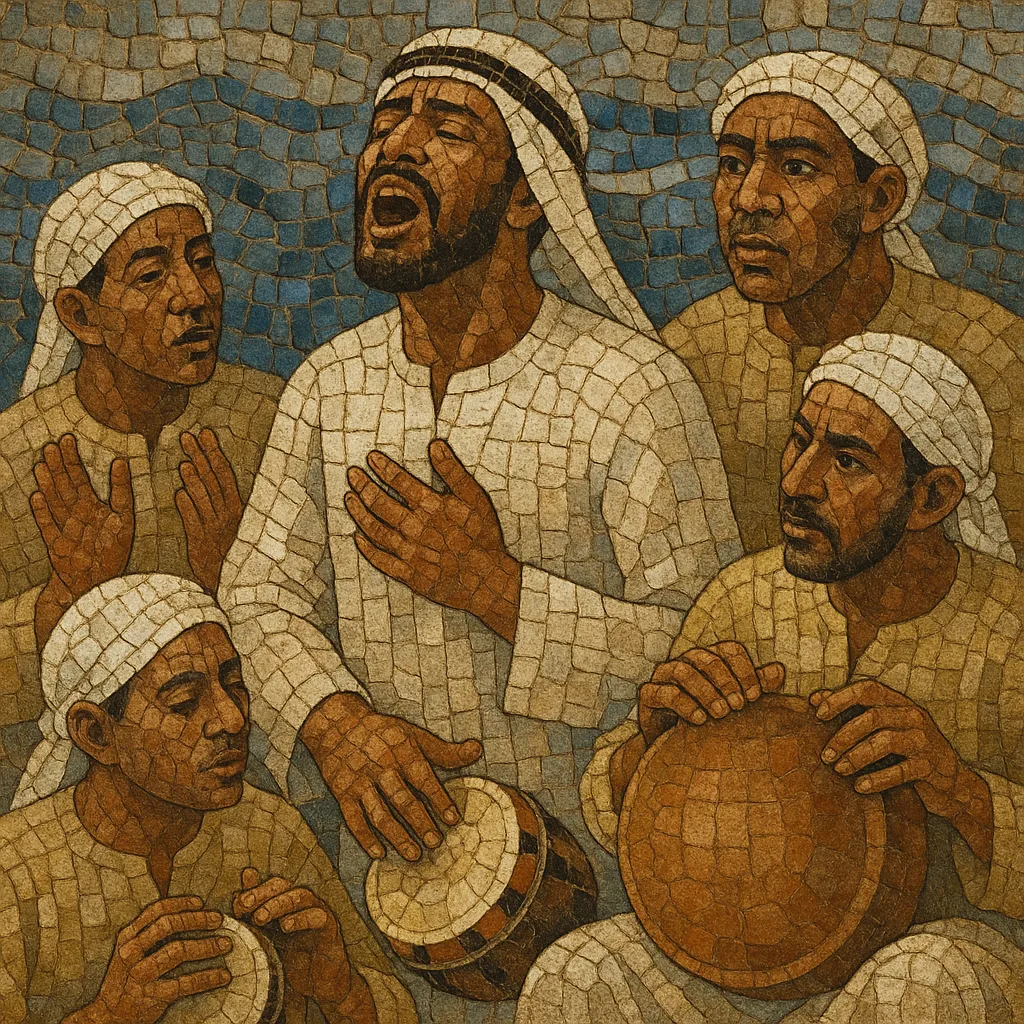Fijiri (also spelled fidjeri) is a traditional vocal-and-percussion music of the pearl-diving communities of the Arabian Gulf, especially associated with Kuwaiti divers and sailors.
It is led by a nahhām (lead chanter) and performed by a male chorus who provide call-and-response refrains, handclaps, and polyrhythmic drumming. Core instruments include the mirwās (small double-headed drum) and the jahlah (a large clay jar used as a resonant percussion), with additional frame drums and vigorous clapping (tasfiq).
Melodically, Fijiri draws on Arabic maqām modes and features melismatic, highly expressive vocal lines. Rhythmically, it uses distinctive cyclical patterns in 2/4, 4/4, and 6/8 feels to pace work aboard dhows and to accompany communal gatherings, often evoking the sea, longing, hardship, and camaraderie.
Fijiri emerged within the pearl-diving economy that flourished across the Gulf in the 19th century. Crews of divers and sailors sang to coordinate labor, keep time, and boost morale on long voyages. The nahhām led improvised verses and melismatic calls, answered by a chorus whose claps and drum patterns stabilized the shipboard work.
Over time, distinct Fijiri song types developed—some solemn and prayerful, others celebratory—mirroring different moments of the voyage and the diving season. The music’s call-and-response textures, cyclical rhythms, and modal inflections became markers of Gulf maritime identity.
The 1930s collapse of the natural pearl trade (due to cultured pearls and economic change) reduced the music’s work function, but Fijiri survived through cultural houses, community ensembles, and state folklore troupes. Field recordings and heritage programs in Kuwait, Bahrain, and neighboring states helped document and transmit the tradition.
Today, Fijiri is performed at heritage festivals, cultural centers, and on recordings, often by dedicated ensembles that maintain traditional repertoire and performance practice. While largely preserved in its acoustic, communal form, elements of its rhythms and vocal style have fed into broader Khaleeji (Gulf) musical aesthetics.


